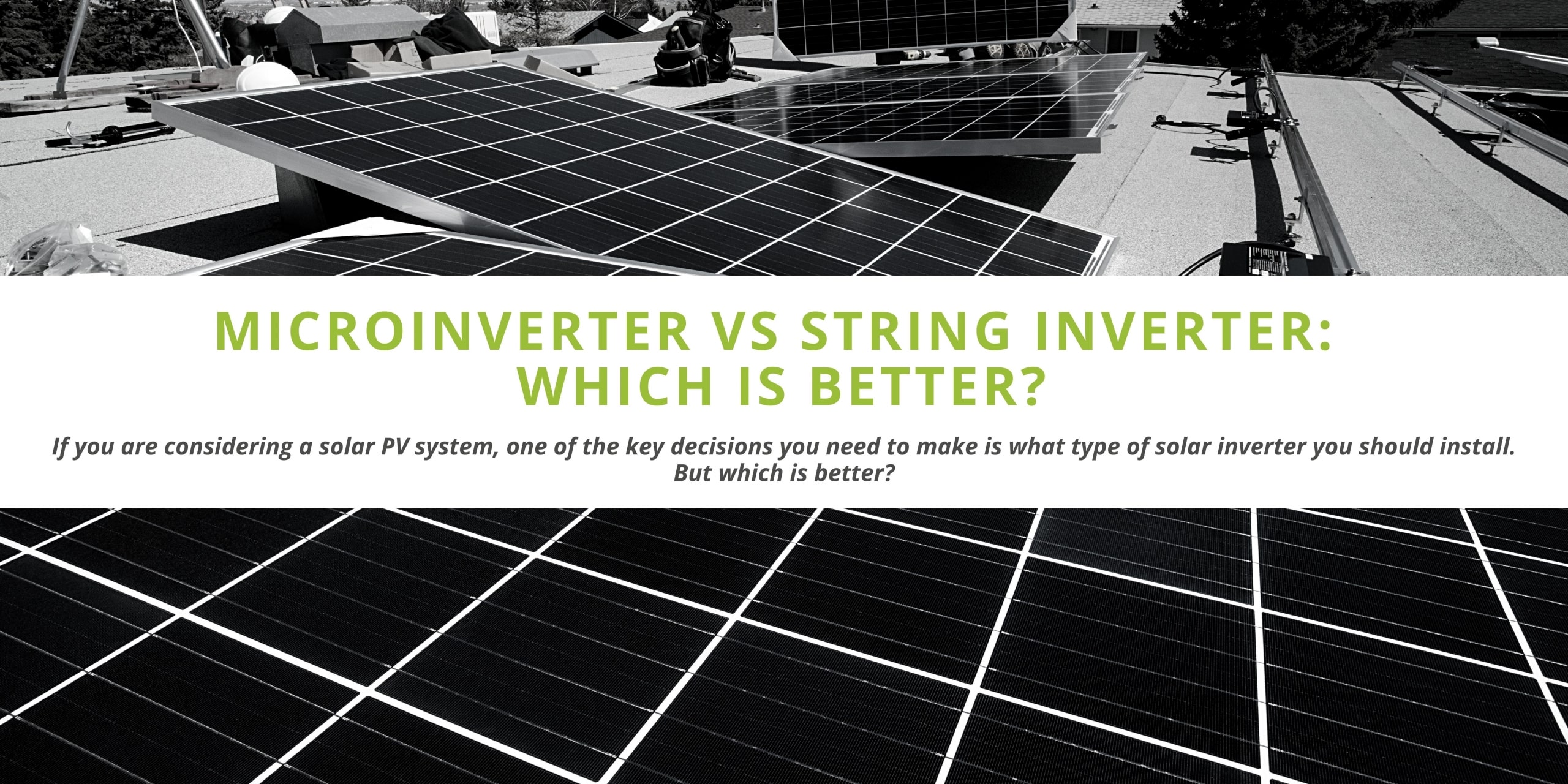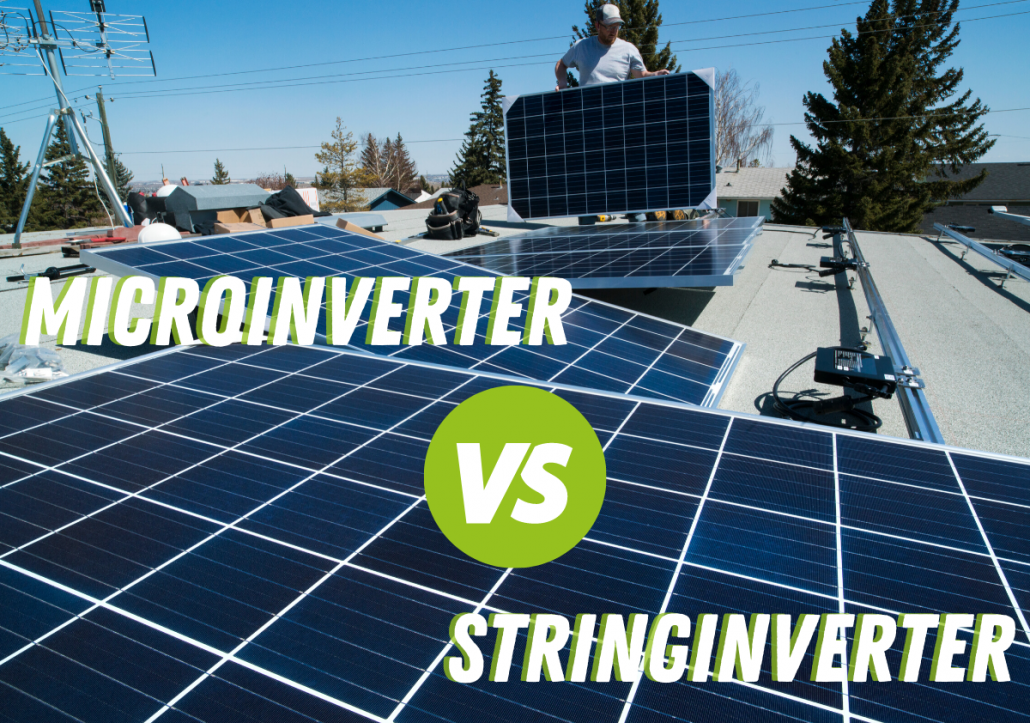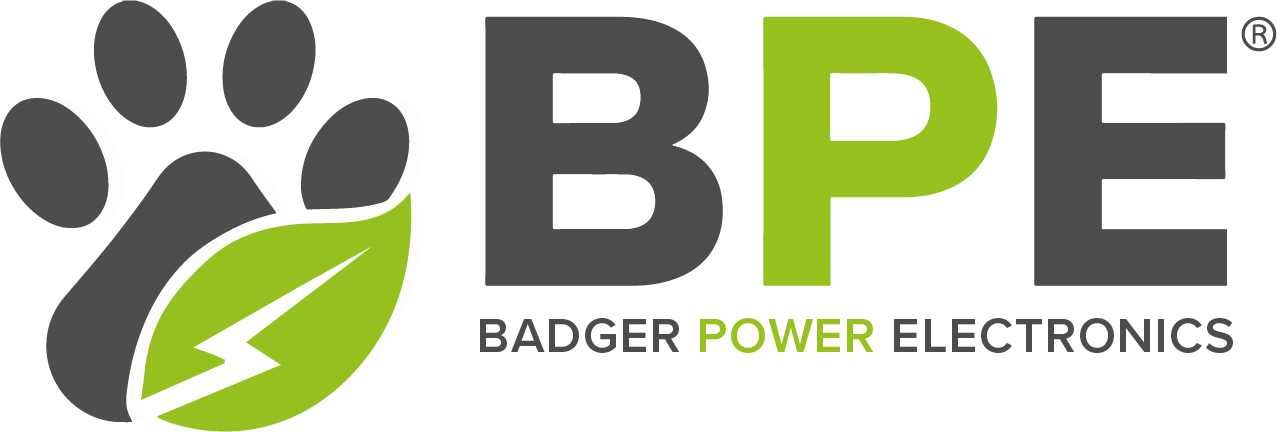
MICROINVERTER VS STRING INVERTER: WHICH IS BETTER?
If you are considering a solar PV system, one of the key decisions you need to make is what type of solar inverter you should install. After the panels themselves, inverters are the most important equipment in the solar power system, but which is better? Microinverter or String inverter? Read on to find out.
Read time: 6 minutes

What are solar inverters?
A solar inverter is an electrical device which changes the direct current (DC) electricity captured by solar panels, into alternating current (AC), which is the standard flow of electricity required for electrical circuits and domestic appliances. The inverter provides analytical information to help in identifying operations and maintenance to fix issues in the system.
There are two main types of solar inverters: Microinverters and String inverters. It is important to know the difference between these systems and understand what will work best for you before buying a solar PV system.
So what’s the difference?
String inverters are the oldest form of solar inverter. They function in a series circuit, where there’s usually 6 to 12 individual solar panels installed on a ‘string’ – hence their name. Multiple strings of panels can be connected to a single inverter, inverting the entire DC electricity produced by the panels, to a more appliance-friendly AC current. Due to being individually attached to each panel, they force the performance to be equal to the worst performing panel.
In contrast, microinverters are attached to each individual panel in the system, and inverter the individual DC output to AC on the roof, removing the necessity of a separate inverter. As the conversion is performed this way, if one or more panels are affected by shade or debris then it doesn’t impact the panels that are still in sunlight. Microinverters perform the same basic function as string inverters, except they sit beneath each solar panel on the roof.
Let’s delve deeper. Which one is better?
Advantages of Microinverters
Higher energy harvest, better savings
The main advantage of using microinverters is the ability to yield more solar electricity. The design of microinverters allow for solar panels to be in parallel with each other, meaning each panel operates independently. Therefore, shading and debris on one does not affect the entire system. As a result, microinverters can produce up to 30% more power than other inverter technologies! This higher output over time will compensate for the higher cost of the system.
Safety & rapid shutdown capability
Unlike string inverters, microinverters do not require high-voltage DC running across the roof. The power output isn’t sensitive to the voltage differences between panels, meaning microinverters have a higher overall electricity yield. In other words, the low voltage 30V DC current enhances the homeowners safety and eliminates the possibilities of arc fires.
Microinverters also perform a rapid shutdown in case of emergency to prevent causing a fire. Most countries require PV systems to have rapid shutdown systems so that first responders or firefighters are safe from high voltage when they need to be on rooftops or servicing power lines.
Panel-level monitoring
Microinverters are able to monitor each panel individually, rather than as a single unit (as a string system would). Therefore, troubleshooting and maintenance is more convenient as the user can track the production of each panel via an online interface. Being able to track each panel remotely allows for issues to be easily identified and fixed. Whereas this would be a much more complicated task with a string inverter system.
Reliability and convenience
The system monitoring makes the communication of system information much more reliable. String inverters stop communicating information if the system goes down, whereas microinverters create a ‘mesh’ network – if one unit fails, performance data is still being passed along to the controller.
More cost-effective
Microinverters are a greater long term investment as string inverters need to be replaced at least once in the lifetime of the solar system. BPE Microinverters come with a 12/25 year warranty.
Advantages of String Inverters
Ease of installation and troubleshooting
The main advantage of a string inverter is that only one is needed to convert DC electricity coming from your solar panels to AC power. You may only need one string inverter however microinverters easy installation comes with a plug and play feature significantly reducing installation time and costs.
Lower costs
As only one string inverter is required for the entire solar PV system, it makes them a cheaper alternative to microinverters but string inverters typically come with a 5 or 10 year warranty where as microinverters are accompanied with either a 12 or 25 year warranty.
Disadvantages of String Inverters
Single point of failure
If the string inverter breaks down, the whole solar array will be inoperable. Similarly, string inverters can only optimise power output at a string level, not at the individual panel level. Therefore, a string inverter system can only work as well as its lowest performing panel. Something as small as a pile of leaves or shading on one panel, can hinder the performance of the whole PV system.
Reduced efficiency and expendability
String inverters need to be working at their peak capacity to get optimal performance. As a result, if you want to expand your solar system at some point in the future, the panels will need to be rerouted to a separate string inverter. This is because once a string inverter is installed at a certain rating, the rating for the inverter can not be altered – meaning you would need to buy an additional inverter. Additionally, the layout design of your solar array may be limited due to the need for 6-12 panels on a string.
Hazardous
There’s lots of high-voltage electricity constantly working on your roof. With energy being converted at the end of the row of panels and not directly at the panel, up to 1,000 volts of DC electricity are transferring across the roof. This comes with potential hazards for homeowners and installers, as it can lead to arc-faulting and fire.
Shorter lifespan
String inverters have a shorter lifespan of 8-12 years, whereas microinverters have up to a 25-year warranty.
Lack of system monitoring
System monitoring isn’t possible with string inverters. While you’re able to see some information, you won’t be able to see if there are individual panel problems.
The Verdict
In conclusion, it really depends on how much you are wanting to spend on your set up. However, microinverters are definitely worth the price premium in comparison to string inverters. The improved energy collection, maximum safety and overall efficiency of microinverters cannot be ignored. Where string inverters lack in efficiency, you can count on microinverter’s technology to maximise power generation for each module in the solar array, and produce up to 30% more power. The ease of tracking the performance and status of each module through a dedicated app makes it easy to pinpoint and rectify any maintenance issues. By choosing a high quality microinverter, such as BPE’s Microinverters, ensures that you’re getting your money’s worth from your solar panel installation.
